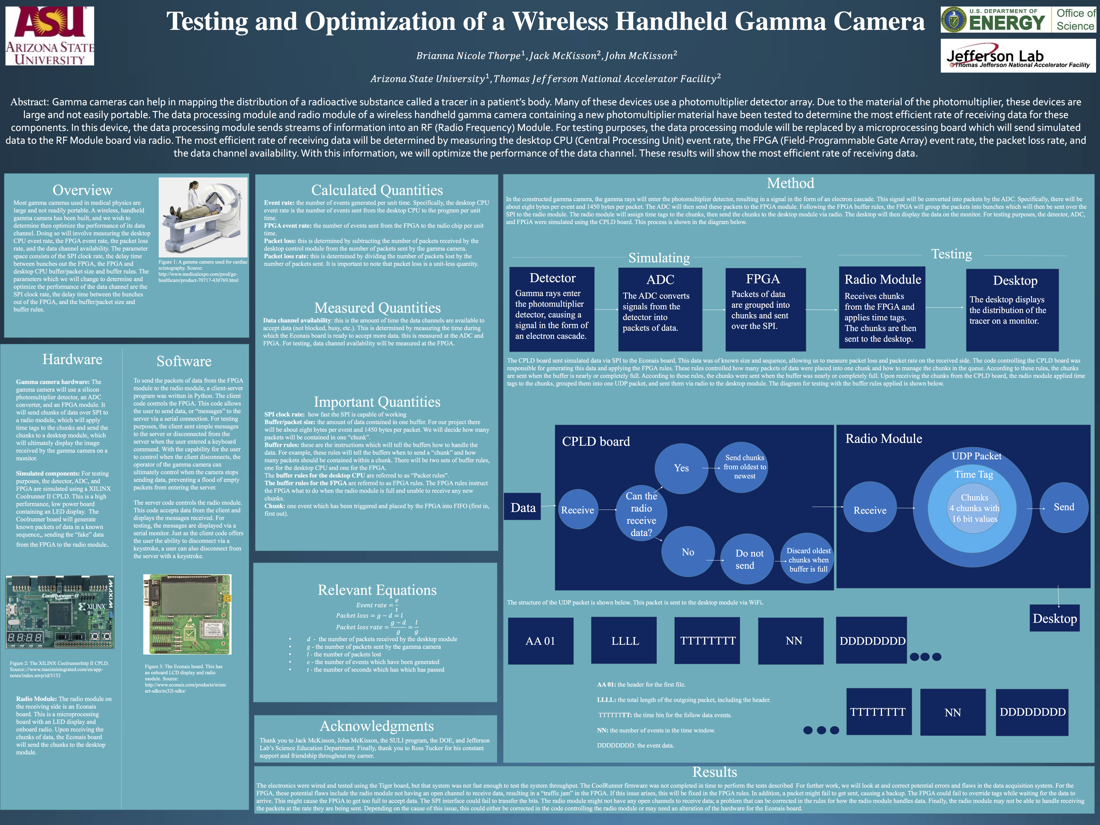Undergraduate Research at Jefferson Lab
Testing and Optimization of a Wireless Handheld Gamma Camera
Student: Brianna Thorpe
School: Arizona State University
Mentored By: Jack McKisson
Gamma cameras can help in mapping the distribution of a radioactive substance called a tracer in a patient's body. Many of these devices use a photomultiplier detector array. Due to the material of the photomultiplier, these devices are large and not easily portable. The data processing module and radio module of a wireless handheld gamma camera containing a new photomultiplier material have been tested to determine the most efficient rate of receiving data for these components. In this device, the data processing module sends streams of information into an RF (Radio Frequency) Module. For testing purposes, the data processing module will be replaced by a microprocessing board which will send simulated data to the RF Module board via radio. The most efficient rate of receiving data will be determined by measuring the desktop CPU (Central Processing Unit) event rate, the FPGA (Field-Programmable Gate Array) event rate, the packet loss rate, and the data channel availability. With this information, we will optimize the performance of the data channel. These results will show the most efficient rate of receiving data.

Citation and linking information
For questions about this page, please contact Steve Gagnon.
